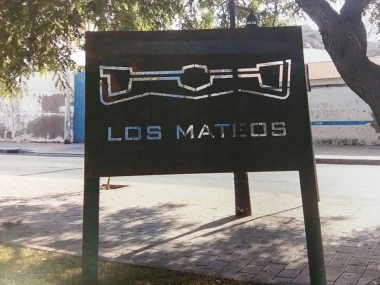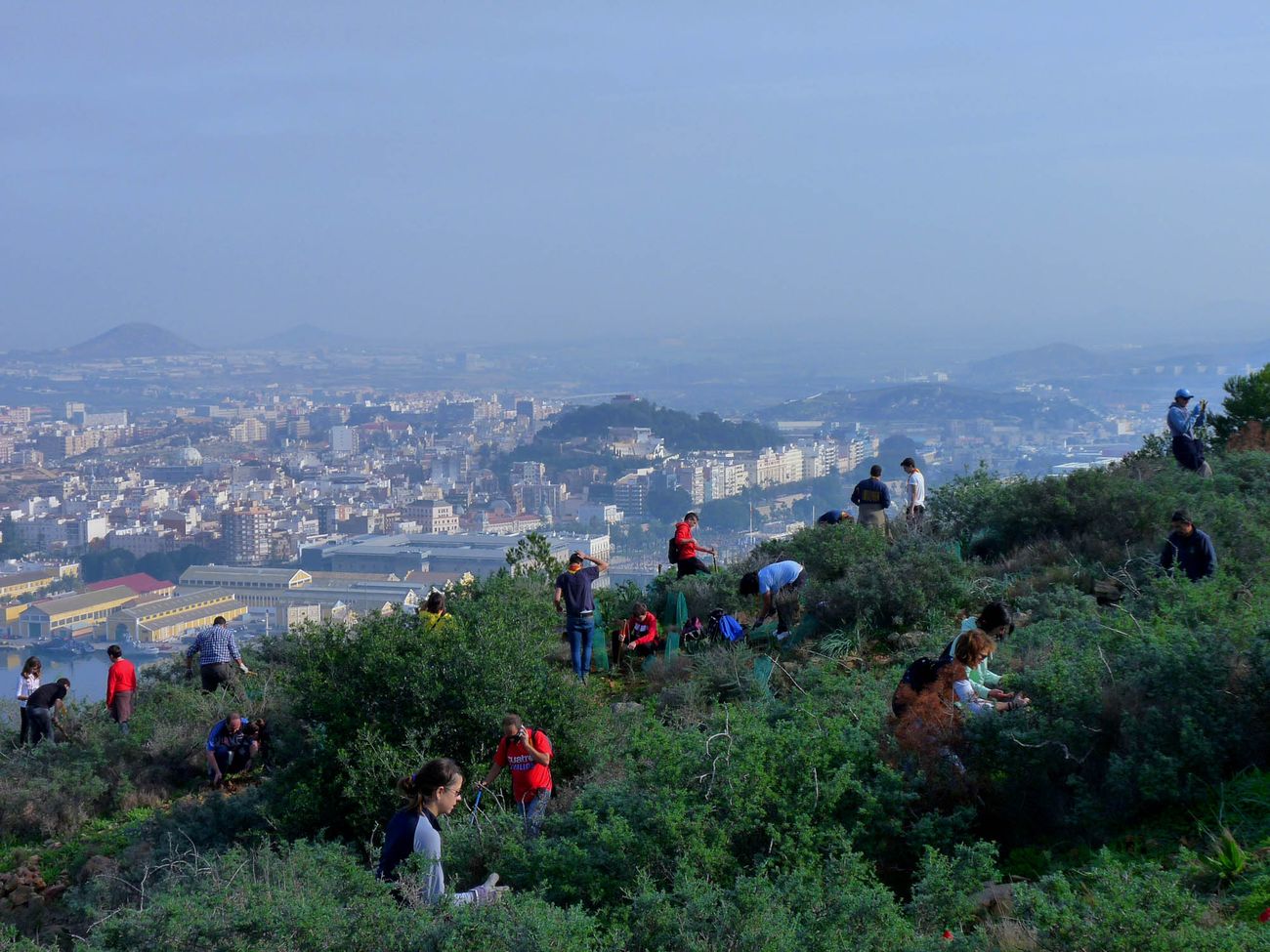Urban and social regeneration in Cartagena
Edited on
07 November 2017Retracing the steps of community engagement in our Spanish partner city, where school pupils imagine a new district for their precious military heritage.

A new signpost, symbol of a new identity. In some ways, a starting point for Los Mateos District in Cartagena, Spanish partner of our URBACT Maps network, although it comes after months of engagement and activity involving the Municipality, local institutions, associations and citizens, sharing the objective of urban regeneration and putting ideas in practice during the meetings of the Ulg. We have often focused our attention on Los Mateos, because it encloses a very important aspect in the renovation and new destination of use for the former military assets that our project deals with: the relationship between a dismissed building or area – in this case, the ancient fortress of Los Moros Castle – and its surroundings. Enhancing the beauty and the historical value of the military heritage means giving new life and opportunities to a crucial area in the heart of the city centre, which has been left over the years to its own development, confronting itself with social and architectural tensions that now claim a solution.
The City Council of Cartagena has always made this clear both with former Mayor José Lopez (now Vice Mayor) – whose administration witnessed the first steps of our network and greeted the participants at the transnational meeting held in Spain a year ago – and with the present Mayor, Ana Belen Castejon Hernandez, who no longer than a couple of months ago announced a new important project for the restoration of Molino de la Piedra, an ancient windmill overlooking a scenic passage of Los Mateos district. On our YouTube channel, you can watch the video of her press conference: https://www.youtube.com/watch?v=byLgzLg3NBc&t=32s. The project, costing 239.000 euro – 25% of which invested directly by the City Council – will benefit from the special funds destined each year to cultural buildings and sites by the Spanish Ministry of Public Works.  The historical Molino de la Piedra, once used for grinding flour and now appealing as a touristic attraction, belongs to the Municipality and has been declared as heritage of cultural interest. Located on a 9 metre-high promontory, it is a characteristic sight for visitors and could serve both as an info-point and as the future site of training workshops for traditional and specialized skills: carpentry (for the restoration of the mill blades) and gardening, which could bring back to life the spontaneous vegetation.
The historical Molino de la Piedra, once used for grinding flour and now appealing as a touristic attraction, belongs to the Municipality and has been declared as heritage of cultural interest. Located on a 9 metre-high promontory, it is a characteristic sight for visitors and could serve both as an info-point and as the future site of training workshops for traditional and specialized skills: carpentry (for the restoration of the mill blades) and gardening, which could bring back to life the spontaneous vegetation.
Cartagena shows a vibrant energy when it comes to involvement of the local community: a new public meeting has been set by the Municipality, for the 7th of November, regarding reforestation plans for the city. The location for the encounter between the Mayor and the citizens is in the heart of Los Mateos district, where a local environmentalist association, Creect, will inform on its action to enhance vegetation on the hill leading to Castillo de Los Moros. Local pressure groups and other associations such as Anse have been invited. Last but not least, it is no accident that a meeting of the Urbact local Group will be held in the same place, at the same time, with the participation of Upct (Politechnical University of Cartagena), Chamber of Commerce, Rascasa association among others.

As a matter of fact, attention to the environment is a constant feature of activities in Los Mateos: no longer than 5 months ago, we wrote on our Facebook page that already more than 80 tons of debris had been removed in the district, whilst school children – aged between 3 and 8 years old – had been guided by Creect and Anse in planting more than 80 different species of trees on an area once used as a dump. The aim that people are sharing in this part of Cartagena, so close to the city centre and yet neglected for a long time, is to create a public space where the local community can happily meet or children play freely. This is why residents and volunteers – using tools offered by La Huertecica association – have been working together to clean the surroundings of Los Moros castle, a public park in Borderan street, the fortress pit and Torreon street, plus the Northern side of Los Moros hill, supported by the Municipality who took charge of the mechanical intervention needed.
Not only has this urban area been included in a regional reforestation project, but an important cultural objective is also being pursued by Creect, in cooperation with the Municipality: restoring Cartagena’s Royal Botanical Gardens, in its original setting adjacent to Los Moros Castle, as depicted in a map dating back to 1788.  Unfortunately, the splendid green area and the richness of its vegetation, along with the Botanical School which had been flourishing under the reign of Carlos III, were destined to decay. Lack of funds meant that the necessary irrigation systems could not be fixed, which led in the early years of 1800 to the transplantation of almost all the species in another district, La Concepcion, where it was estimated that cultivations could have more protection against the winds blowing from the coast. However, the transfer proved lethal for almost all the plants. Bringing back to life the elegance of the Real Jardin Botanico, such as it once was, could be a further step towards the regeneration of Castillo de los Moros, saving it from abandonment.
Unfortunately, the splendid green area and the richness of its vegetation, along with the Botanical School which had been flourishing under the reign of Carlos III, were destined to decay. Lack of funds meant that the necessary irrigation systems could not be fixed, which led in the early years of 1800 to the transplantation of almost all the species in another district, La Concepcion, where it was estimated that cultivations could have more protection against the winds blowing from the coast. However, the transfer proved lethal for almost all the plants. Bringing back to life the elegance of the Real Jardin Botanico, such as it once was, could be a further step towards the regeneration of Castillo de los Moros, saving it from abandonment.
From the past to the future, leading us to another symbol: the drawings submitted by pupils of Anibal Primary School, in a special competition where they were asked to imagine “a renovated district and its fortress”. The colours they used, fostering the idea of a welcoming and homely urban space, express the urge to make Los Moros castle and Los Mateos district a place full of life and joy, enhancing the depth and beauty of its historical roots, the breathtaking views dominating the city and its seafront, but most of all the need to re-create a community.

 Submitted by emorni on
Submitted by emorni on
